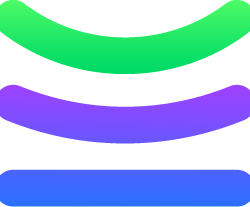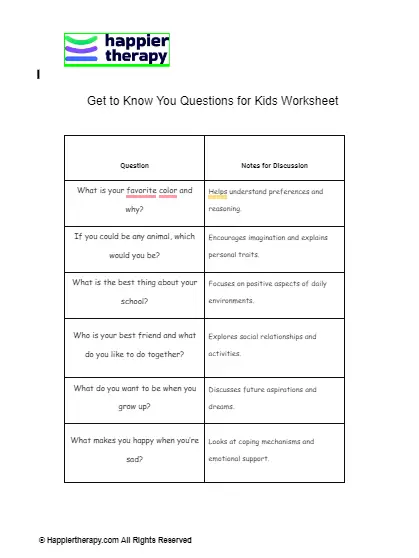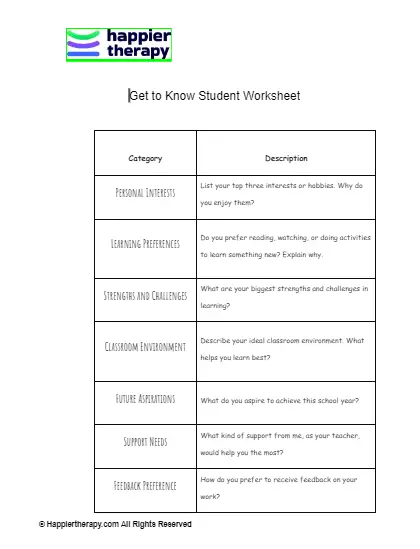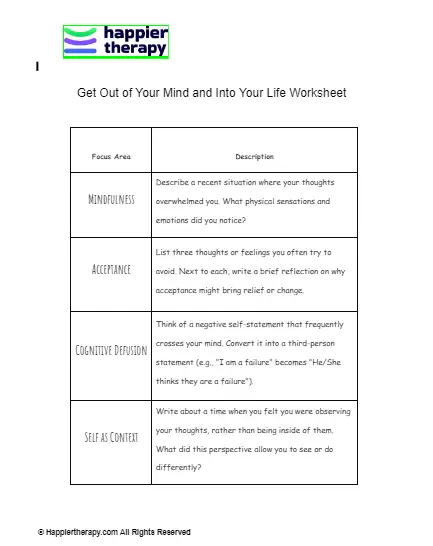EATING DISORDER TREATMENT WORKSHEET
Premium Content
Access this worksheet and 2,500 mental health worksheets. Cancel anytime
Eating disorders are serious, biologically influenced medical illnesses marked by severe disturbances to one’s eating behavior. The most common eating disorders are anorexia nervosa, bulimia nervosa, and binge-eating disorder.
Unlock deeper healing — upgrade to Premium now!
Customizable and fillable worksheets
Rights to alter the worksheets
Over 2000 worksheets
Support HappierTherapy
Eating disorders can affect people of all ages, racial/ethnic backgrounds, body weights, and genders. Although eating disorders often develop during the teen years or young adulthood, others could develop during childhood (pica and rumination) or later in life (40 years and older).
Eating disorders frequently coexist with other mental illnesses, such as depression, substance abuse, or anxiety disorders.
Early detection and treatment are pivotal for a full recovery. The treatment plans are often tailored to an individual’s needs and include the following;
- Psychotherapy
- Medical care and monitoring
- Nutritional counseling
- Medications
What Are The Theories Behind This Worksheet?
- Cognitive Behavioral Therapy (CBT)
CBT is a type of psychotherapy focusing on behaviors, thoughts, and feelings related to one’s eating disorder. CBT helps patients to recognize and change distorted thoughts that lead to eating disorder behaviors.
- Dialectical Behavioral Therapy (DBT)
DBT is a talking therapy adapted to treat individuals who suffer from intense emotions. DBT teaches individuals to identify, accept, and regulate their emotions through mindfulness, interpersonal effectiveness, distress tolerance, and emotional regulation.
- Family-Based Therapy
Family members learn to help their loved ones restore healthy eating patterns and achieve a healthy weight. This therapy can be beneficial for parents learning how to help a teen with an eating disorder.
- Interpersonal Psychotherapy
This therapy improves relationships and significant social roles in a person’s life. It is used in treating eating disorders since complex relationships or significant life changes may be the underlying cause of the eating disorder.
How Will This Worksheet Help You?
This worksheet will help patients explore different treatment plans associated with eating disorders, manage symptoms, return to a healthy weight, and maintain physical and mental health.
How Should You Use This Worksheet?
This worksheet should be used as a collaboration between a therapist and a patient to identify one’s eating disorder, develop a plan for treatment and work towards developing strategies to prevent relapse.
Moreover, you can also use this worksheet as a self-evaluation tool to help you understand and identify which treatment plan works best for you.
Was this helpful?
References
1.-
American Academy of Paediatrics: Health Issues. (© 2023). Treating Eating Disorders. Available at: https://www.healthychildren.org/English/health-issues/conditions/emotional-problems/Pages/Treating-Eating-Disorders.aspx. [Accessed February 18, 2023]
2.-
Mayo Clinic. (© 1998-2-23). Eating Disorders. Available at: https://www.mayoclinic.org/diseases-conditions/eating-disorders/symptoms-causes/syc-20353603. [Accessed February 15, 2023]
3.-
Mayo Clinic. (© 1998-2-23). Eating Disorder Treatment: Know your options. Available at: https://www.mayoclinic.org/diseases-conditions/eating-disorders/in-depth/eating-disorder-treatment/art-20046234. [Accessed February 18, 2023]
4.-
National Institute of Mental Health. (2021). Eating Disorders: About More Than Food. Available at: https://www.nimh.nih.gov/health/publications/eating-disorders. [Accessed February 18, 2023]

 By
By


